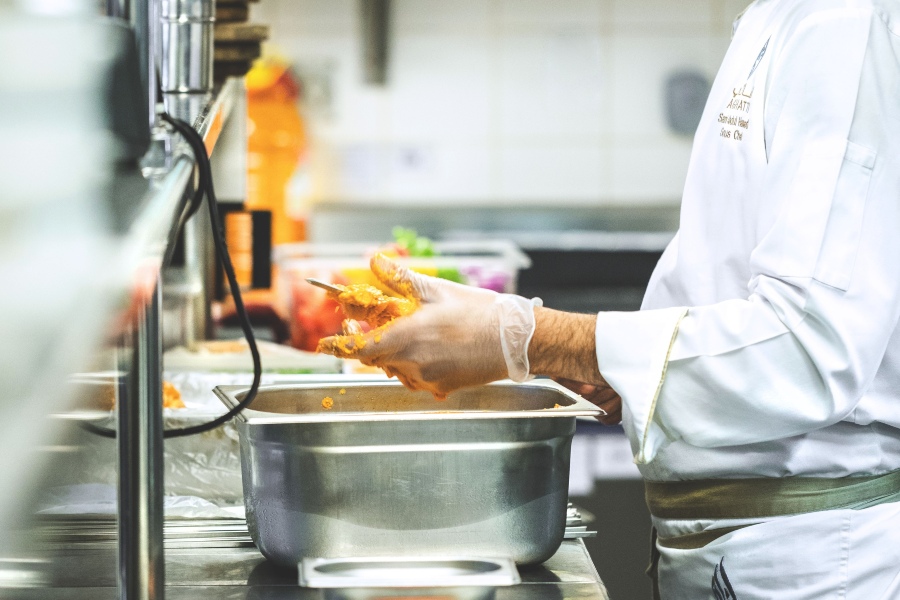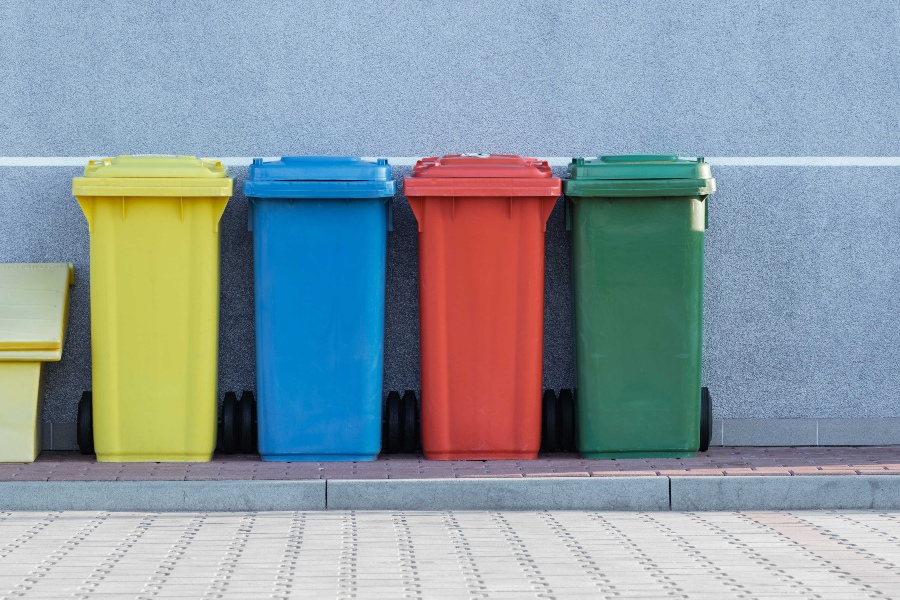Commercial kitchen users and their teams need to be aware of food safety guidelines, how to follow them and for that information to be easy to access by all members of staff. In fact, anyone operating in a kitchen where food is prepared for sale is legally obligated to follow these guidelines.
FoodStars is here to help with a quick and comprehensive set of guidelines on food storage, waste management and general food safety for use in commercial kitchens, whether you are setting up a new kitchen for the first time or need refresher for staff to reference.
What You Need To Know Legally About Food Safety
The Food Standards Agency has clear guidelines and advice for all aspects of food safety, in your commercial kitchen and at home. This applies to food trucks, catering kitchens, and anywhere you prepare food that is to be consumed.
Looking at the key regulations on food safety, you need to be aware of the following:
- You must not add, remove or treat food in any way that causes it to be damaging to the health of people.
- Any food served or sold has to be of the quality, substance and nature to which the consumer would expect.
- You must NOT label and advertise your food in a way that misleads the consumer or is false.
These are clear, simple rules that are easy to abide by if you are a good food business. All of these are foundational when looking at the aspects of food safety, across food handling, storage and disposal of waste in your commercial kitchen.
Food Safety
Food safety is the broadest way of saying: keep food, cooked or raw, kept in a condition that allows it to be consumed. In a commercial kitchen, this applies to how your staff are handling food (as raw ingredients, when serving or storing), where and how they are storing it and how food is dealt with during the preparation process.

Handling Food
Food can become contaminated at any stage in the food handling and preparation process. The consequences of this can cause serious damage to your customers health and you need to be doing everything you can to avoid this.
Wash Your Hands Regularly
Maintaining food handling standards will help you to reduce the chances of contamination. The first point, as laid out by The NHS, is washing hands. Washing your hands with warm water and soap, before and after each stage is the best way to avoid contamination. This includes when “handling food, and especially after touching raw food, the bin, pets, and going to the toilet.”
Use Different Chopping Boards
Since you will likely be handling raw meats when preparing food in your commercial kitchen, the potential to spread germs is high. Cross contamination from raw to cooked foods and between ingredients must be avoided.
Most commercial kitchens for food businesses will utilise different chopping boards for each kind of ingredient, perhaps colour coded for simplicity – though you should be aware of any colour blindness in your kitchen staff and amend accordingly.
You should have a chopping board for each of the following:
- Meat and poultry – for example: beef, pork, chicken
- Fish – including crustaceans (prawns, lobster, etc)
- Vegetables and Bread – this can be the same board, though you may want one for each.
Fridge Storage
Just as you are using chopping boards based on the foods that you are preparing, so you should be organising your fridge to store your ingredients, whether raw or cooked, safely.
Raw meat must be kept as far away from other raw ingredients, and even further from cooked foods. In a commercial kitchen, you should have the space to keep these foods in different fridges. At the very least you should have a fridge each for cooked and uncooked foods.
When organising your fridges for food safety, raw meats and poultry should be kept on the lower shelves, this is to avoid any dripping onto other foods. You should keep these foods in sealed and clean containers with clear labels with use by dates.
If you have limited fridge space, use this guide:
- Top: Cooked foods.
- Middle: Raw vegetables and fruits.
- Bottom: Raw meat, poultry and fish – ideally fish above or separate from the others.
More and more food handling is also about ensuring that allergens aren’t spread. Take a look at our guide to keeping your kitchen staff allergen aware to learn more.
Temperature & Food
Temperature is an important factor in regards to food safety. “The coldest part of the fridge should be below 5°C.” and no more than 5°. Ideally at warmest your fridge should be 1°. This is to make sure that all food in the fridge is kept cool and safe to eat. Avoid overstocking a fridge as this can affect its ability to keep foods at the right temperature.

Blast Chilling & Freezing
For speed, you may wish to blast chill foods in your commercial kitchen during or as part of the preparation process. Food “must be reduced from +70ºC to +3ºC or below within 90 minutes” to be considered safely chilled and to avoid bacteria from developing.
If you are freezing any foods then you must do so before the use by date. For meats and poultry, you should date and label when they are frozen or cooked and consume within 24 hours of defrosting. Meat, poultry and fish must never be refrozen if raw, but can be frozen once cooked after defrosting.
Keeping Food Hot
“Hot food must be kept at 63°C or above, except for certain exceptions” says the UK Government. This pertains to food that is being held for hot sale. If you are transporting the food then it can be kept off the heat for a maximum of two hours before needing to be reheated. This can only be done once, otherwise the food is considered unsafe to eat.
You should also be letting hot food cool for at least two hours before refrigerating. This isn’t because it will spoil if you cool it too quickly, rather any hot food will change the temperature of the fridge and that could affect the preservation of the other foods in your fridge.
Waste & Disposal

Kitchen food safety extends beyond what is consumable. Food waste and how you dispose of it is an important part of keeping your kitchen clean and hygienic. There are a few key ways you should be aware of food safety when it comes to waste:
- Remove waste and rubbish from food preparation areas as soon as possible, clean as you go.
- Your food waste bins and containers must be closed, not open air.
- Food bins must be clean, that means regularly making sure they are rinsed and refreshed.
- All waste bins and disposal containers should be kept out of the reach of pests.
You should always be getting rid of your waste in the appropriate way, via rubbish collection bins. You can get in touch with your local council to make sure that you are disposing of food waste in the right way. Most commercial kitchens, including FoodStars, will have on-site waste disposal points for food waste, recycling and other rubbish expected from commercial kitchens.
Correct Disposal Of Fats, Oils And Grease
Many people, whether in domestic kitchens or commercial kitchens, don’t know how to dispose of waste grease, fats and oils correctly. You should never attempt to get rid of this waste in the sink. Not only will pipes clog, but they can travel into sewers causing further issues, such as “fatbergs”. South West Water advises that you scrape, collect, wipe and empty.
Firstly, you should be scraping any food waste in bins. If you are making batches then this will be less relevant than in a restaurant where you are clearing lots of plates. Once your food is stored in containers, any fatty remains should be collected into “gunk pots”. The containers will change in size depending on how much fat and grease comes from your cooking processes.
You should collect all cooled fats, grease and oils into the gunk pot, whether from pans, trays or pots. Give them a wipe with paper kitchen towel to remove any hard to reach spots of slick substances. You can then wash your items, either in a dishwasher or by hand with hot soapy water. There should be minimal grease or oil being rinsed away at this point. Greasy paper towels and the gunk pot should be disposed of in your waste bin.
Bins: Waste Disposal Options
There are a few options to choose from when looking for the right waste and recycling bins for your kitchen. As a food business in a commercial kitchen, where food contamination awareness is of paramount importance, choosing bins that enable easy use is advisable.
- Pedal Bins – These are great for disposing of food waste during food preparation. With a pedal, your chefs won’t need to touch the bin lid and risk contamination.
- Swing Bins & Waste Bins – These both allow for easy use, but swing bins require hand contact and waste bins if they don’t have lids are not appropriate for kitchen use as they are open air.
- Sack Trolleys – Although these require hand contact to operate, they have the added advantage of being manoeuvrable, which can make waste disposal easier and avoids having to carry waste across the kitchen.
You may wish to opt for a few different kinds of waste disposal units depending on if you are dealing with food prep waste, recycling or other general kitchen waste. Keep these bins in a designated area, clear of the cooking areas to maintain food safety standards.
Keep Your Customers Coming Back
The food sector is built on creating great food that is not only safe to eat but enjoyable. Using safe ingredients and maintaining proper storage, as well as keeping foods clear of waste or out of date items, all ensure that you never contaminate great food or lower its quality. Stick to these guidelines and you’ll stay on the right side of the law and, crucially, your customers.
If you’re a food delivery business, take a look at our guide to delivering food safely. Just because you don’t have face to face interaction, doesn’t mean that you shouldn’t care about what happens once food is with your customer.